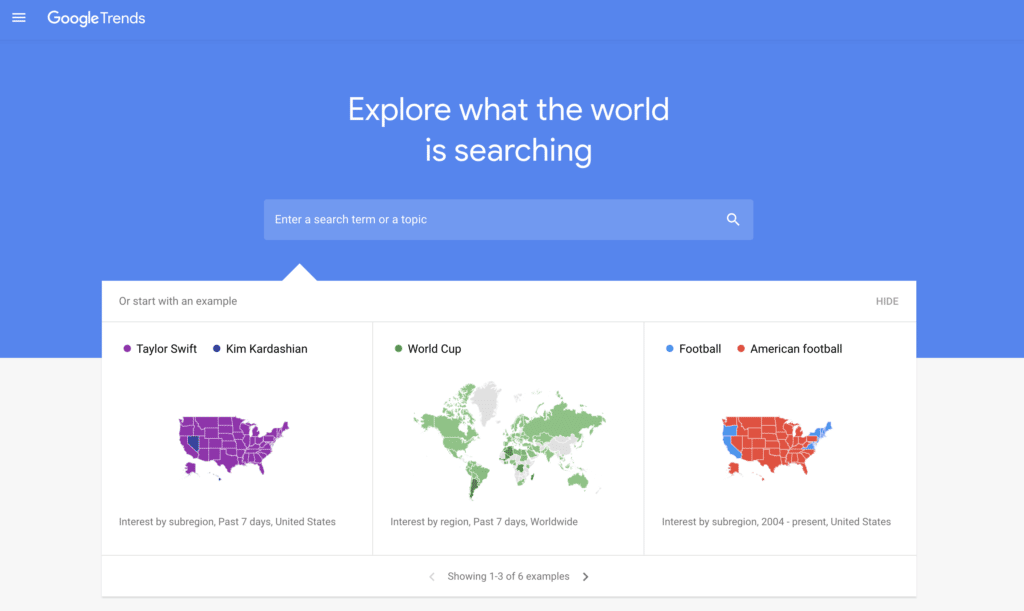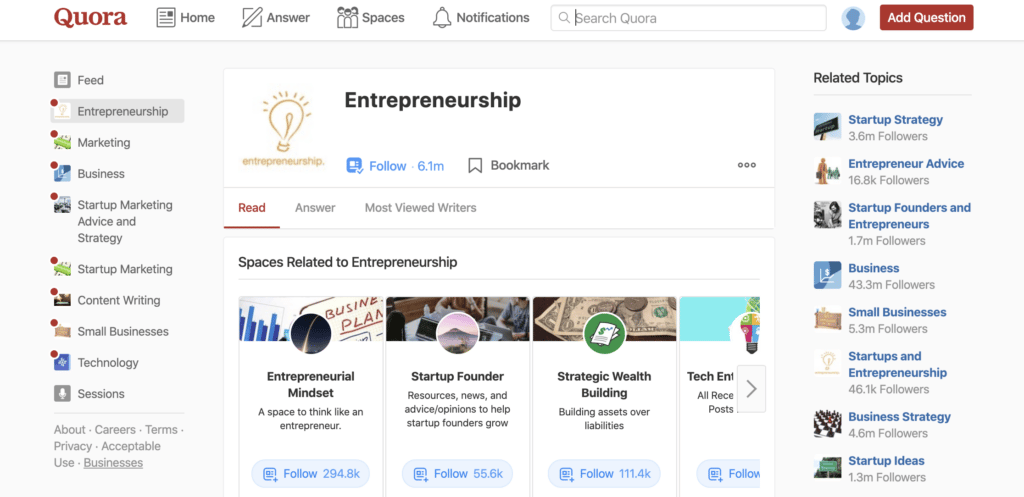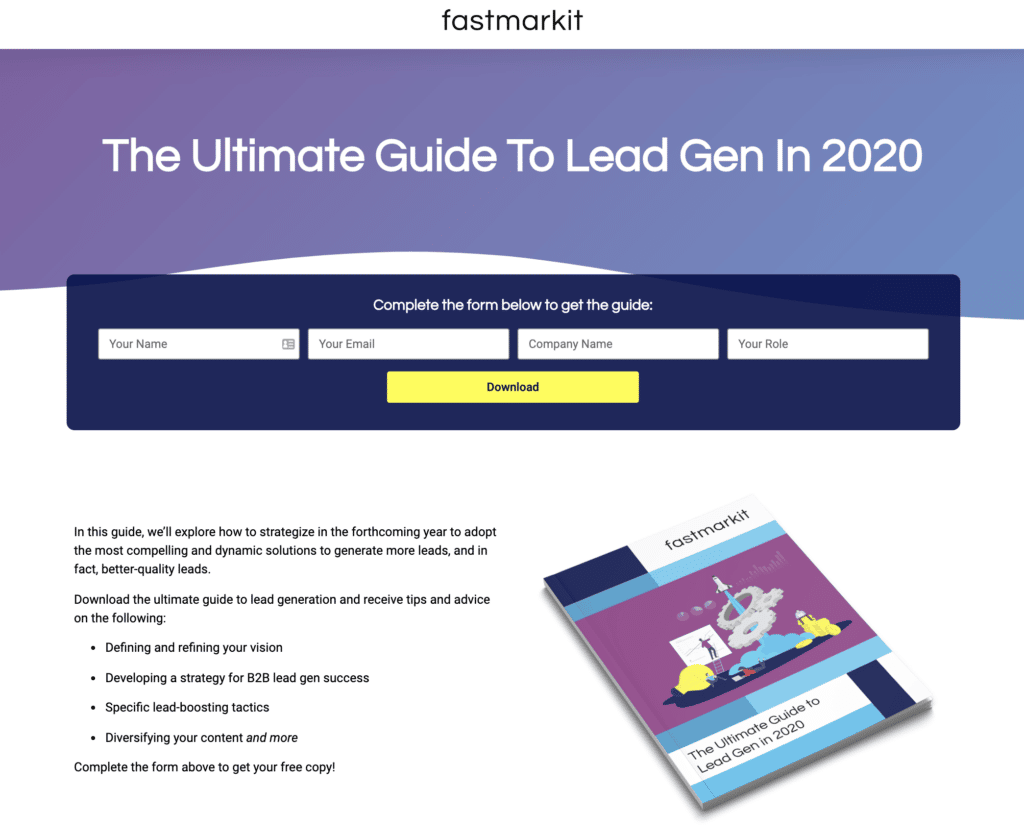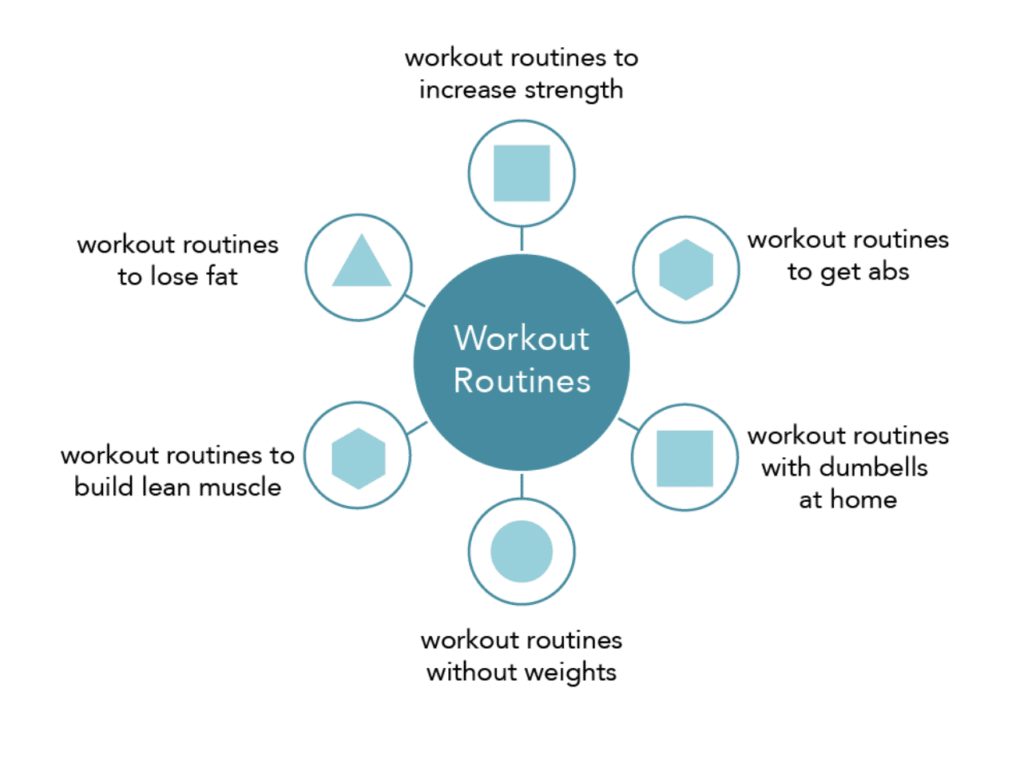Is low blog traffic keeping you awake at night?
You’ve poured hours into making a blog and writing content you think is award-worthy. You’ve hand selected topics that you think will make a difference. Maybe you’ve even gone as far as hiring professional writers who can turn your jumbled thoughts into words that flow as smooth as butter.
But let’s be honest: your blog isn’t really about you. Ultimately, everything you write is about the person reading it — without blog traffic, all the money and hard work you put into your blog is for nothing.
The good news is that blog traffic isn’t something you have to leave to chance. In this guide, I’m sharing 19 proven strategies that you can control and give your blog the love and attention it deserves.
1. Develop an Audience Profile
First things first: before you start writing another floundering blog post, take a little time to understand exactly who you’re writing for.
In the blogging world, this is called, “audience persona” or “buyer persona.” It defines who are readers are, what they expect from the content, their pain points, and other details that can help us shape every piece of content we write.
Here’s a quick framework you can use to start developing an audience profile:
- What is special or unique about your target audience?
- What characteristics do they have in common?
- What are they looking to take away from your content?
- What problems do they face that you can solve in your blog?
- How are they trying to find answers to their problem?
- What is their level of expertise in the topics you’re writing about?
- What questions are they likely to have about a topic that you could answer?

Some people take this exercise a step further by fleshing out the demographics of their readers, such as age, income, occupation, and even geographic location.
Remember, it’s not just about getting blog traffic, but rather getting the “right” traffic. The more you can learn about your audience, the better prepared you’ll be to create valuable content that’s worthy of your readers’ time.
2. Choose the Right Topics
One of the biggest conundrums in blogging is understanding why some topics get all the attention and others are left to rot. It’s not always obvious on the surface when a topic is going to bring in the traffic. If you end up selecting a topic that no one else is interested in, you’re not going to get the traffic you want, no matter how well written your content is.
Knowing what your audience is looking for can be digital gold for a blogger, so take advantage of research tools that can give you the inside scoop on what matters to your readers.
You can use tools like SEMRush, BuzzSumo, and Google Trends to detect trending topics in a particular niche or industry and tailor your ideas to those trends. These tools look at things like Google searches, social shares, and other data-driven indicators that take the guesswork out of selecting topics.

Once you know what people are already searching for, it’s 1000 times easier to know what you should write about.
It’s like having blog traffic handed to you on a silver platter – get ready to dig in!
3. Focus on Evergreen Content
Much like a tree that doesn’t shed its leaves, evergreen content stays (mostly) relevant regardless of its age. Rather than focusing on timely news-type pieces, you can shift your focus to evergreen content that will continue to make an impact a month or even a few years after you’ve written it.
For example, a blog post about a trade show recap can get you quick traffic hits, but a few weeks later, no one’s going to care about it. However, a blog post about planning for a trade show will continue to be relevant long after you hit Publish.
That’s not to say that all of your content should be evergreen, as there will be times that you can benefit from timely, temporarily-trending articles. But if you want to get the biggest bang for your buck, think in terms of content shelf life to keep a steady flow of blog visitors.
4. Share Your Content on Quora
We talked earlier about the importance of writing content that addresses questions or topics that people are interested in. Quora can be a gold mine for finding these topics AND providing a solution to the people asking questions.

You can check out Quora for yourself, but in a nutshell, it’s a website where users can ask questions and other users will answer them. It’s a different platform than your typical forum, however, since the users typically have credentials that make them better suited to provide answers.
If you sign up for a Quora account (which is free, by the way), you can include your own credentials that show why you’re the expert on a particular subject matter. It adds credibility to your responses every time you answer a question and may make people more likely to trust your advice.
A Quora blogging strategy has two parts:
- First, you can go to Quora to find questions people are asking about your industry, niche, or something related to your blog. Now you have a topic to write about.
- And second, you can go back to Quora to answer that person’s question and include a link to the freshly-minted blog post you wrote just for them (and anyone else who has that question).
Your answer is public, so anyone who sees that question can read through the responses and click the link to your blog.
5. Develop a Posting Schedule
Successful blogging depends on consistency. Those who visit your website and want to return will also want to know when new content will be published. If they keep visiting your website and you have nothing new to offer, they’ll stop coming altogether.
Though it can be disheartening to think your blog isn’t working, don’t stop! It can take months before seeing any form of ROI. The best thing you can do is decide how often you want to post and STICK TO IT!
Blog schedules range from daily to weekly to biweekly to monthly, or something in between. Choose a schedule that makes sense for your industry and audience, then make your best efforts to stick with the plan.
6. Invest in Keyword Research
Though your writing should cater to your human readers, you’ll also need to take algorithms into account. Search engines rely on a number of factors to determine where your content will land in the rankings. One major component: keywords.
Keywords are the terms that people type into search engines to find content. When your blog post contains the keywords people are actively searching for, you’ll have a greater chance of positioning your content in their search results.
So, how do you go about finding high-traffic keywords?
You’ve got several options:
- Keyword Tools. First, you can invest in high-end keyword tools like Ahrefs, or use free versions like the one offered by The HOTH. You can see the number of monthly searches for a specific term, the level of difficulty for ranking for that term, and who’s ranking well for that term, among other data. Stick with keywords that have high traffic (at least 100 searches per month) and low difficulty (10 or less) to maximize your efforts.
- Long Tail Keywords. Long tail keywords are becoming increasingly important in SEO. These are longer search phrases than the typical keyword (example: ranch dressing vs. where to buy ranch dressing) and offer more insight into user intent. In our example, a search for “ranch dressing” could pertain to ingredients, recipes, history, or other aspects. But the long tail keyword “where to buy ranch dressing” is a specific query that indicates a readiness to buy. This is more likely to direct to an ecommerce store where you can buy ranch dressing rather than a website offering recipes or a history. You can use the aforementioned keyword tools to find long tail keywords, or simply start typing a search into Google and see what auto-fills. Google will make suggestions based on previous searches, giving you the inside scoop on what others are looking for.
- Competitor Research. Want to beat out your competitors? It helps to know what they’re ranking for so you can come back with a bigger, better blog post. You can use tools like SEMrush or Ahrefs to do a little recon. First, go to a competitor’s blog post and copy the URL. Then, paste the URL into Ahrefs to see which keywords they’re ranking for. You can “steal” their keywords and incorporate them into your own blog post and give them a run for their money.
7. Use Yoast for WordPress
If you have a WordPress blog, the Yoast plugin is the most invaluable tool at your disposal. Download it for free, then use its features to optimize every post for SEO.
Yoast will grade your blog post on SEO friendliness before you publish and let you know exactly where you need to make adjustments. It looks for things like keyword density and placement, formatting (e.g. headers, etc.), sentence complexity and readability, and other data that can help you polish your content before anyone sees it.
The ultimate goal for any blogger is to land on Google’s coveted Page 1. Studies show that the top 10 results get 95% of all clicks, so this gives you the best chance of reaching your audience organically and reducing or even eliminating your ad spend. Once you correct your mistakes and get the Yoast green light, you’ll have a better chance of improving your content’s search rankings to drive more traffic.
8. Network with Other Bloggers (and Leverage Their Audience)
No blogger is an island. While some people see other bloggers as competitors, especially if they’re in the same industry or niche, you’ll actually find it beneficial to build a symbiotic relationship with them.
Remember, they’re also bloggers – with an audience! Offer to help each other by commenting on each other’s posts, sharing each other’s content on social media, and even guest posting on each other’s blogs. This will get your name and blog in front of a new following and add credibility to your brand. Plus, it’s not like you’re stealing customers – most people would appreciate the fact that they can get high-value content from two blogs instead of just one, so there’s plenty of room for you and fellow bloggers to thrive.
9. Optimize Your Blog for Mobile Viewing
One of Google’s latest algorithm changes is placing a higher emphasis on mobile viewing. We’re past the tipping point where more searches occur via mobile than a fixed connection, so mobile-friendly websites will continue to play an important role in rankings.
Here’s what interesting: Google ranks mobile content differently than on a standard desktop or laptop. A good rule to live by is to take a mobile first approach. The more you can cater to the small-screen audience, the more likely you’ll be to rank higher in mobile search results.
10. Increase Your Website Speed
Slow load times can kill your blog traffic. Studies have found that pages that take more than three seconds to load lead to higher bounce rates and disgruntled users. In fact, some estimates have found a 1% drop in users for every 100 millisecond delay.
We’re living in the era of instant gratification. People want things now and don’t want to wait for your content to load. If you’re slow on delivery, they won’t want to explore your blog content. Even worse, they’ll go somewhere else and likely won’t return to see if you’ve fixed the issue.
Check your website speed for free with Google’s PageSpeed tool. If your website takes longer than three seconds to load, you’ll need to find out what’s causing the delay and what you can do about it.
11. Start an Email Newsletter Strategy
Out of sight, out of mind? Bounce rate is a serious issue for most bloggers, with average rates reaching anywhere from 26% to 70% or more.
Bounce rate occurs when someone lands on a blog post or web page, then takes no further action on your website. They don’t buy, they don’t explore other pages, and many people who come to your blog may never return again unless you have a way to stay in touch.
It’s common for blogs to offer an email signup so that readers never miss an update. This prompt is usually displayed in a sidebar or as a pop-up form. It’s relatively easy to set up using tools like Mailchimp or OptInMonster, with no coding knowledge required.
Each time you write a blog post, you can use services like Mailchimp to let your subscribers know about it. Craft a unique subject line, give a little teaser in the body of the newsletter, then include a link that will take readers to the blog post.
Promotion is critical to any blog’s success, and email is by far one of the most cost-effective ways to do it. In fact, research suggests that email can deliver up to $44 in revenue for every $1 spent. This guide from Litmus covers the subject in greater detail.
12. Offer Premium Content
If you’re struggling to grow your email list, consider adding premium content creation to your marketing mix. Premium content can take a variety of forms, from eBooks to white papers to checklists and more. These need to be your most high-value offerings that people will want to give up their email address in exchange for a copy of your content.

Users can opt-in to receive your premium content for free, which will grow your list of subscribers. Now you have a bigger audience for promoting your blog posts, which means more people you can drive to your website.
13. Add Backlinking to Your Strategy
Backlinks are links that send readers to different content. There are two types of links: internal and external.
Internal links are those that link to content within the same website. For example, you might include a link in your blog post to another relevant blog post you wrote.
External links send readers to an entirely different website. For example, we have added external backlinks throughout this guide so you can learn more about the statistics we cite.
Both are essential to SEO because they indicate a higher quality of writing. Let’s face it: anyone can ramble on about a topic they know about, but links make the content more authoritative. You’re backing up your claims with resources and other details so that readers can verify what you say is true.
You have full control over your internal links: just add them naturally throughout your content wherever they make sense.
You can also build external links by guest posting on other websites. These links will send users to your blog post so that you become an authoritative information source. Partner with other bloggers or businesses to see if they’ll let you guest post on their website – they’ll get free content out of the deal and you’ll earn yourself some backlinks (win win!)
14. Write Content Round-Ups
Round-up posts can be an effective way to tap into multiple audiences at the same time. You’ve likely seen product or expert round-ups that contain a number of different ideas, advice, or other information within the same post. Each of the items in the post is a potential new audience for you to get in front of.
For example, if your blog is about human resources, you might do a round-up featuring 18 HR executives and their best advice for onboarding. If you’re an Amazon affiliate, you might do a product round-up of the 10 best organic mattresses.
Each of the brands or people featured might be willing to share your post in their media outreach, giving you more exposure and driving more organic traffic to your blog. Plus, it can net you some high-quality backlinks from the content partners you featured in your blog post.
15. Double Down on Pillar Articles
Pillar articles are long-form, comprehensive articles that focus on a variety of subtopics related to a core subject, or pillar. This is a different approach than most blogs take, which is writing shorter articles on similar topics.
For example, this guide is a pillar article that focuses on a variety of techniques to boost your blogging strategy. Each of these techniques can become stand-alone blog posts if we add a little more detail. In fact, we could take this article and make it even longer by talking about other topics related to blogging, such as steps to defining an audience persona or ways to market your blog.

OptinMonster grew their blog fanbase quickly by focusing on pillar articles vs. short-form topics. They currently hold several #1 spots on Google because they covered topics in greater detail than anyone else. You can check out the full case study here.
16. Develop an Editorial Calendar
Editorial calendars not only help you manage your publishing schedule, but can also help you identify new opportunities to grow your following.
Use your calendar to prioritize and time your blog post ideas. Most of us come up with so many topics we lose count, and may give up because we’re overwhelmed. Laying out our ideas in an easily digestible format can help us time our posts to maximize engagement.
Many content marketers use this strategy to plan for seasonal content. As new events enter your radar, you can consult with your calendar to tailor your content strategy and maintain relevance to your audience.
17. Prioritize the User Experience
Your users are the entire reason your blog exists, so prioritizing their experience with your content is paramount. Things like readability and layout can make a strong impression and decide whether or not your reader returns.
The most important thing to remember is this: most of us have short attention spans. We don’t want an extensive search effort to find the content we’re looking for. The easier they can navigate your website, the greater chance they’ll look at you favorably.
Here are a few things you’ll want to keep in mind:
- Write short sentences.
- Keep paragraphs to 2-3 sentences for better readability.
- Use headers to break up chunks of information.
- Choose readable fonts.
- Check your grammar and spelling.
- Include visual elements like images, videos, and infographics to jazz up your text.
You can use Hemingway App for free to check your content’s readability and look for opportunities to improve it. Aim for a 9th grade reading level to cater to a larger audience.
18. Write Great Headlines
Never underestimate the value of a great headline. Studies show that 8 out of 10 users will read the headline and decide whether or not to click through to your content.
Think of your headline as the first impression: if it doesn’t relay what the user is looking for, then they’re likely not going to click on your article.
Headlines should be short and catchy, but also informative to set the right expectations for the reader. It’s not just about creative wording and humor. Our best advice is to let creative happen when it happens, but try not to force it. It’s more important to deliver a clear, honest headline rather than come up with something fun but vague.
19. Pay for Ads
Organic traffic is every blogger’s dream, but if you’re just not getting the numbers you need, it might be worthwhile to explore paid advertising opportunities to jumpstart your fanbase.
Social media platforms like Facebook are among the most popular and inexpensive methods of advertising. You can set your budget and adjust as needed, plus you can tailor your audience preferences so that only your target users are seeing your ads.
Eventually, you may be able to pull out of paid ads altogether as word starts to spread about how awesome your blog is.
Final Thoughts
I’ve covered a LOT of expert tips and strategies that are proven to grow blog traffic. But the most important thing to remember above any methodology is this:
Focus on the content quality and design it for your readers.
It’s easy to get caught up in SEO and algorithm rules, but remember those search engines aren’t buying anything from you. When you take care of your readers and serve them with the quality content they came looking for, they’ll be more likely to take care of you in return.





